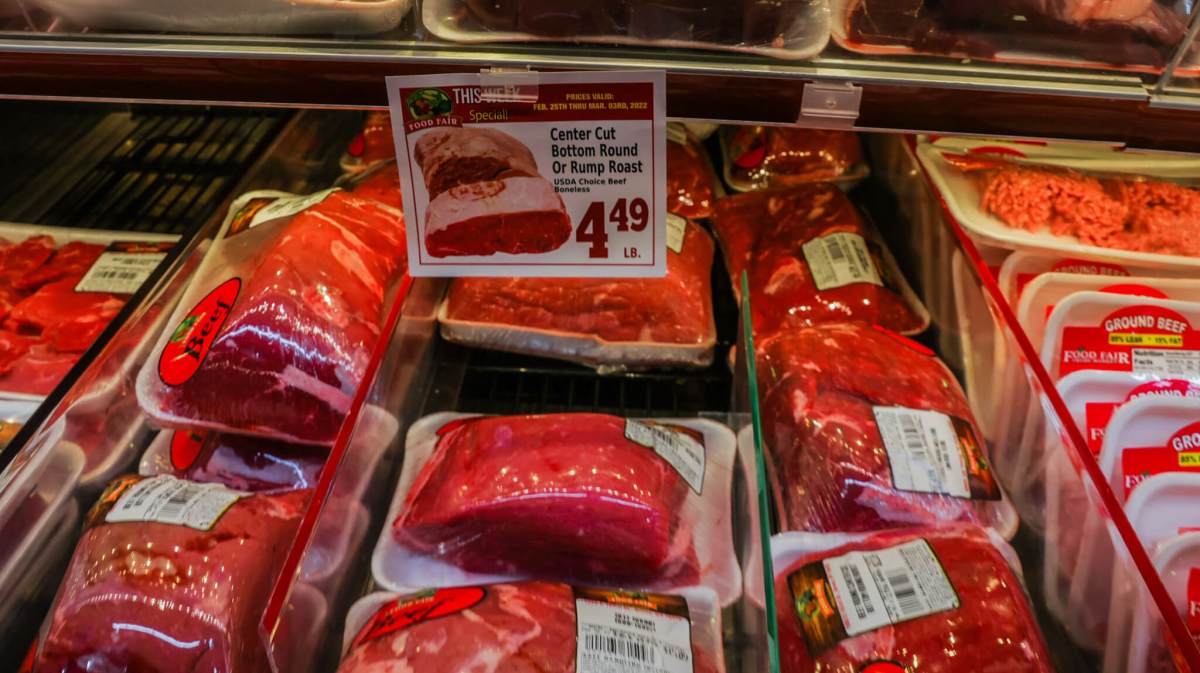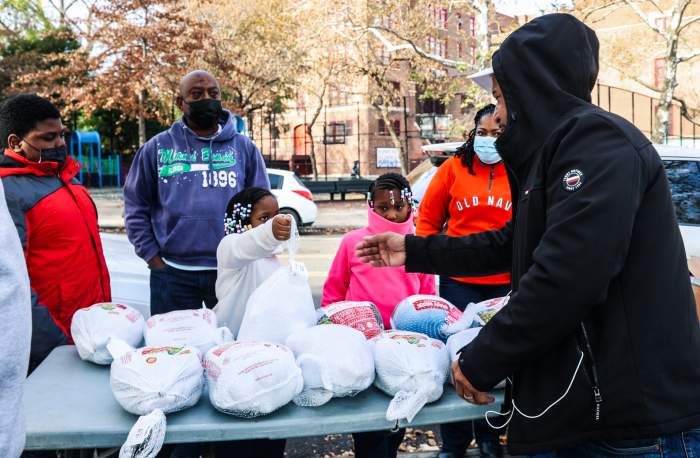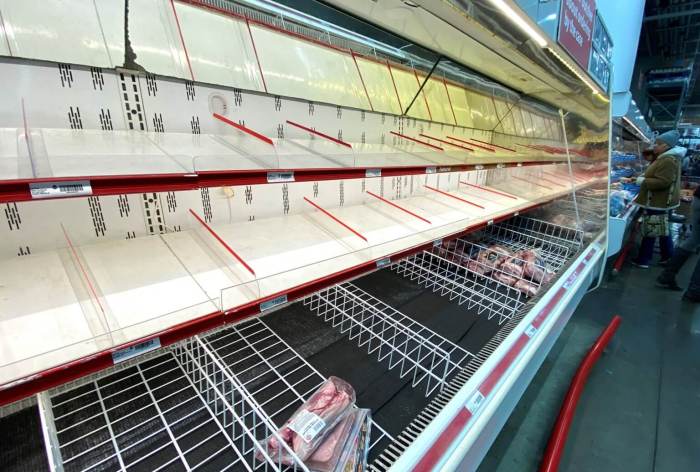While the price of meat, poultry, fish and eggs prices have soared roughly 16% since last year, it hasn’t deterred the customers of Morris Park’s Big Deal Foodtown from checking those items out on cashier Christina Nellis’ conveyor belt.
“I think people are willing to pay whatever price if it’s an essential item, and may leave stuff like chocolate cake behind, if they can bring home meat for dinner,” said Nellis. “But as the prices go up, so does the complaining, so it’s a give and take.”
Overall grocery prices soared 6.5% in 2021, marking the biggest increase in 13 years and it’s just another uptick in prices caused by record-high inflation in the United States. Rising food prices, analysts say, are driven by supply chain disruptions and increased demand for goods.
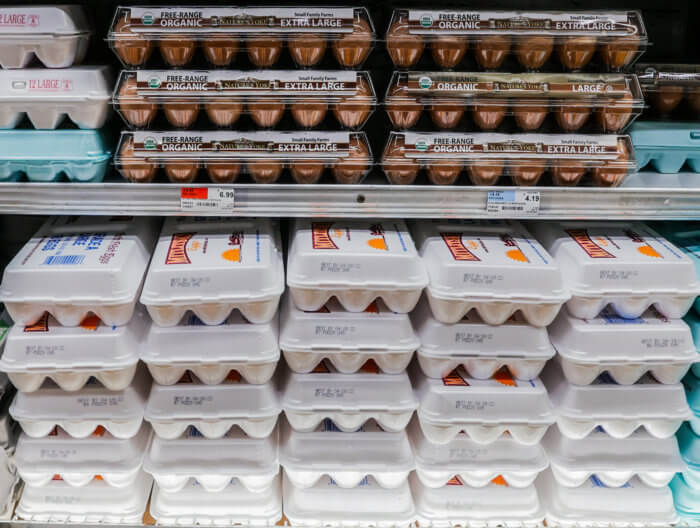
But in the Bronx, which is the city’s “hungriest borough” with 1 in 4 residents experiencing food insecurity — rising food prices is another hurdle to overcome for struggling families.
“We’re kind of priced out of the packaged meats, so you gotta start looking at the canned meats and the SPAMs to get by,” said Gloria Rodriguez, a South Bronx native who regularly shops at C-Town Supermarket on Southern Boulevard. “I’ve got eight mouths to feed, not including my own, and making minimum wage, it’s heartbreaking that I can’t afford to give my family a steak or chicken dinner every night.”
Food pantries, turkey drives becoming essential for hungry families in South Bronx
The U.S. Bureau of Labor Statistics divides their food price index into six categories and calculated their rising costs since the beginning of the 2022: meats, poultry, fish and eggs (+16%); cereals and bakery products (+8.6%); nonalcoholic beverages and beverage material (+6.6%); other food at home (+5.8%); dairy (+3.8%); and fruits and vegetables (+1.2).
Analysts attribute the jump in meat prices to a shellshocked meatpacking industry that endured COVID-driven plant shutdowns, safety protocols to space out crammed employees, and labor shortages that reduced the number of cows these plants could process.
Moreso, cattle farmers saw less money for their herd, while the cost of the end product spiked for consumers.

Agricultural economists say that pandemic-stoked meat demand, especially in beef, led to a shortage of slaughterhouse capacity, a supply-chain problem not foreign to other industries. It’s also not aided by an industry dominated by four global companies — Tyson Foods Inc., JBS, Marfrig Global Foods and Seaboard Corp. — who all saw their margins triple during the pandemic, according to a December report from the Biden administration.
The Biden administration argues that those companies are responsible for squeezing consumers and fueling inflation, and facilitated the Biden-Harris team to develop an action plan to ward off anti-competitive practices and price-gouging through a $1 billion investment in new independent processing plants, $100 million for worker training, and new rules and ways for farmers to report anticompetitive practices.
And local chains also feel the sting of a monopolized meat market, as multiple grocery stores in the Mott Haven, Parkchester and Throggs Neck section of the Bronx said that meat industry executives have made unilateral moves to drive up prices for years.
But in the aisles of some Bronx supermarkets, consumers aren’t balking yet at paying a little more for those chicken nuggets.
“Some people are going to be more price-conscious, some people are going to pay for what they believe is the best quality item. There’s always a variety of consumer behaviors,” said Martin Kohli, regional economist for the U.S. Bureau of Labor Statistics. “We have a sense that some will make substitutions, and they might eat chicken or a hamburger, if they can’t afford the steak. But it’s hard to tell if these changes are seismic enough to see a downward shift in consumer behavior.”
For Bronxites who cannot afford to pay $5 or more for a slab of meat, or leverage half of their minimum-wage paycheck on overpriced goods, it’s fueled a rise and need for food pantries.
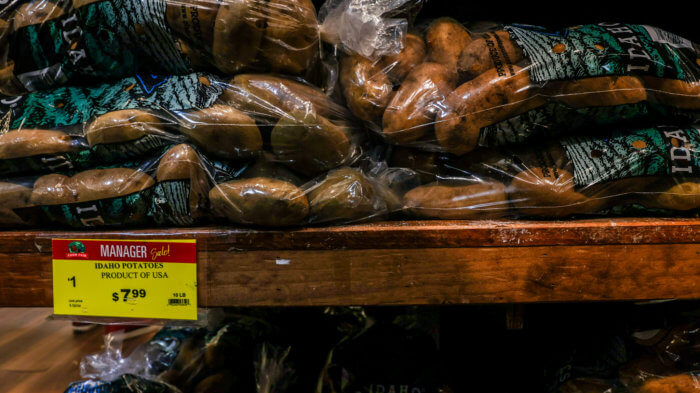
Of the NYC food pantry users surveyed between Dec. 27 and 31, 2021,96% of those surveyed reported they noticed higher food prices, and 87% reported they changed what food they bought because of higher prices and that they expect to have to visit food pantries more often because of higher prices.
City Harvest, New York’s first and largest food rescue organization, plans to deliver about 300,000 pounds of food each day, to the nearly 2.4 million New Yorkers struggling to make ends meet. City Harvest in September 2021 delivered its one-billionth pound of food, a majority of which has been fresh, nutritious produce.
“New York City’s food insecurity crisis long predates the COVID-19 pandemic,” said Jilly Stephens, CEO of City Harvest. “Millions of people across the city already struggled to feed themselves and their families, and rising food prices have only exacerbated those challenges. Since the start of the pandemic, City Harvest has rescued and delivered more than 250 million pounds of food and we don’t see that elevated need returning to pre-pandemic levels any time soon. We will continue to work day in and day out to ensure all New Yorkers have access to fresh, nutritious food.”
Reach Robbie Sequeira at rsequeira@schnepsmedia.com or (718) 260-4599. For more coverage, follow us on Twitter, Facebook and Instagram @bronxtimes.

